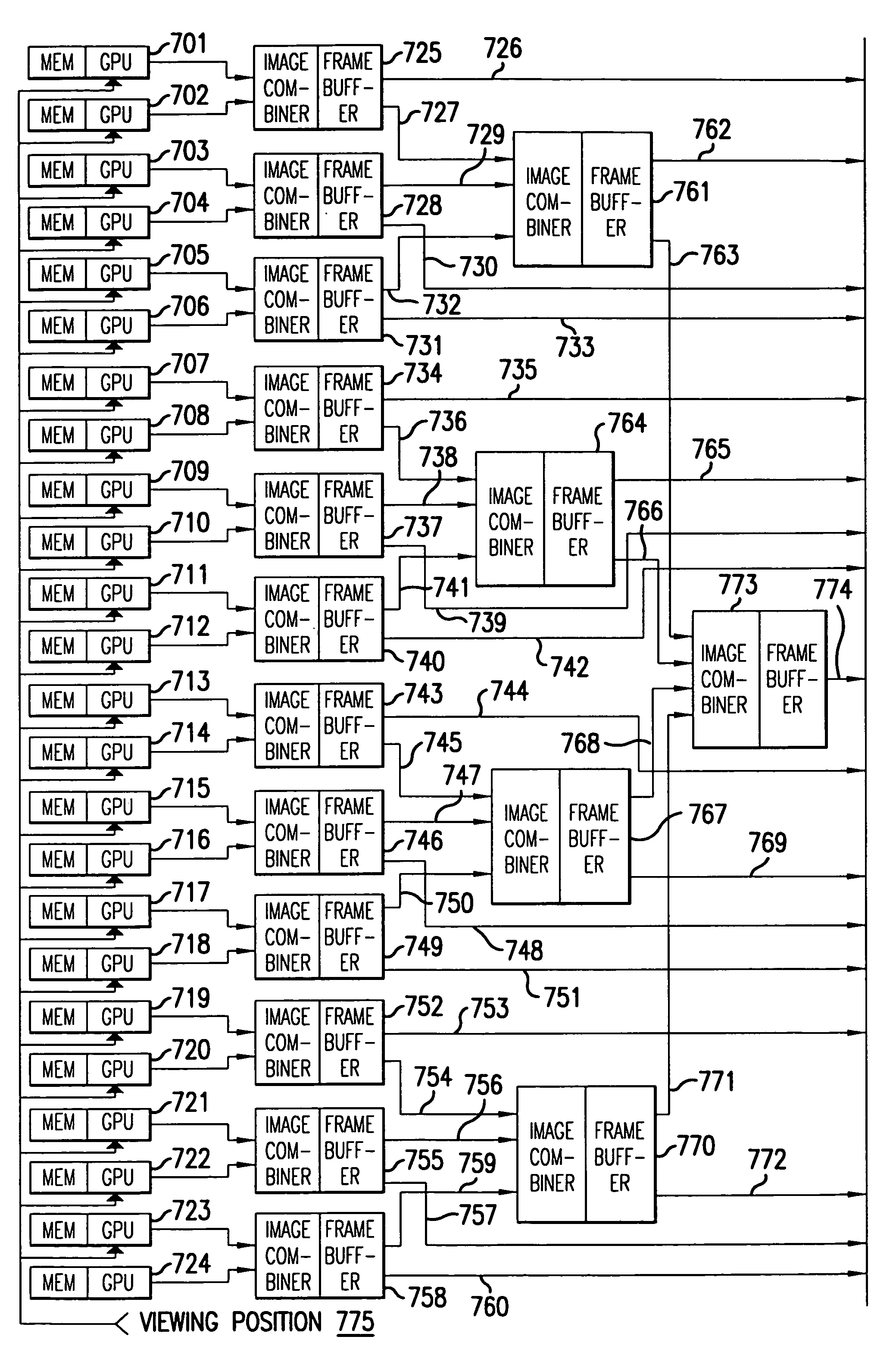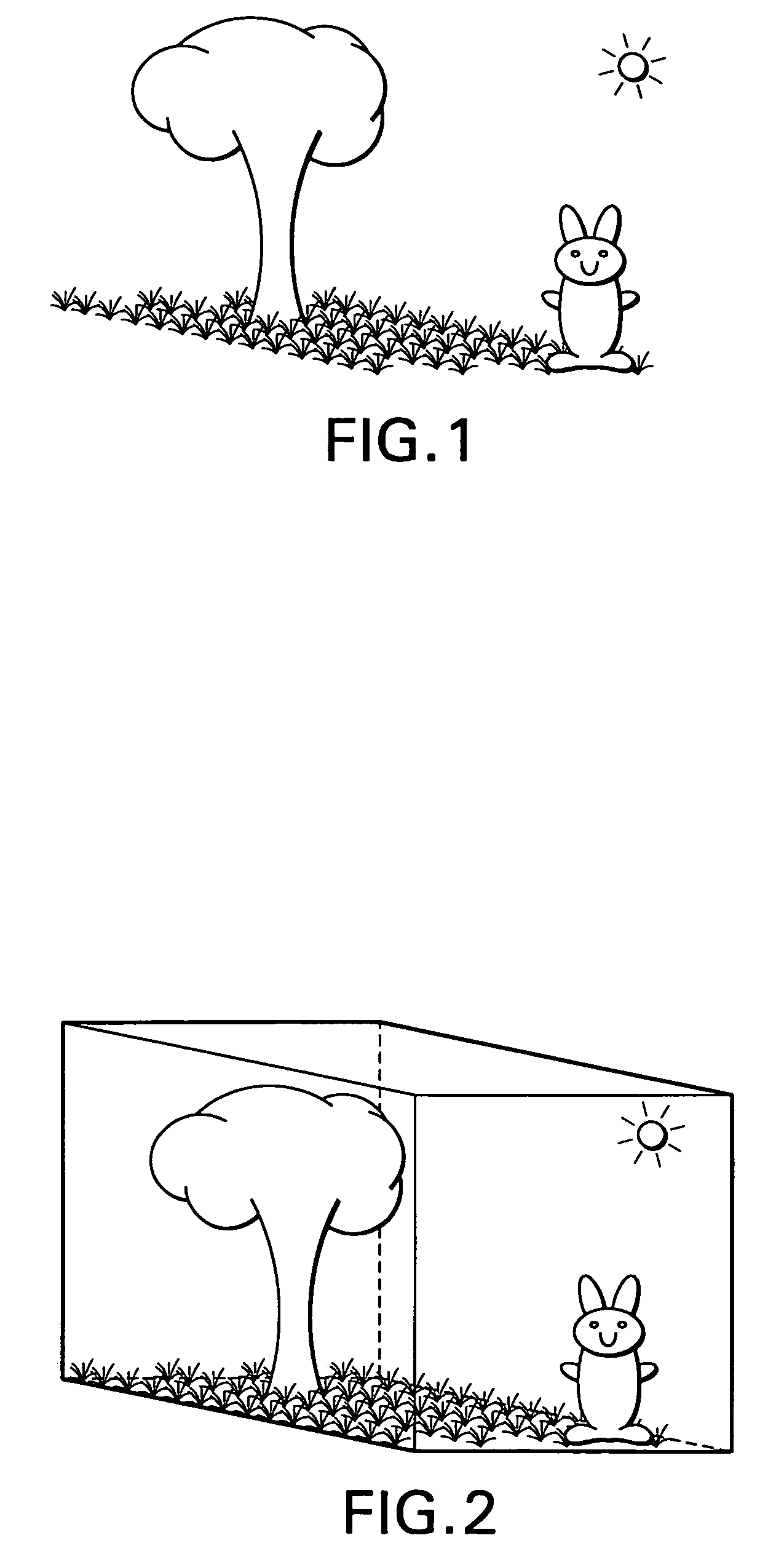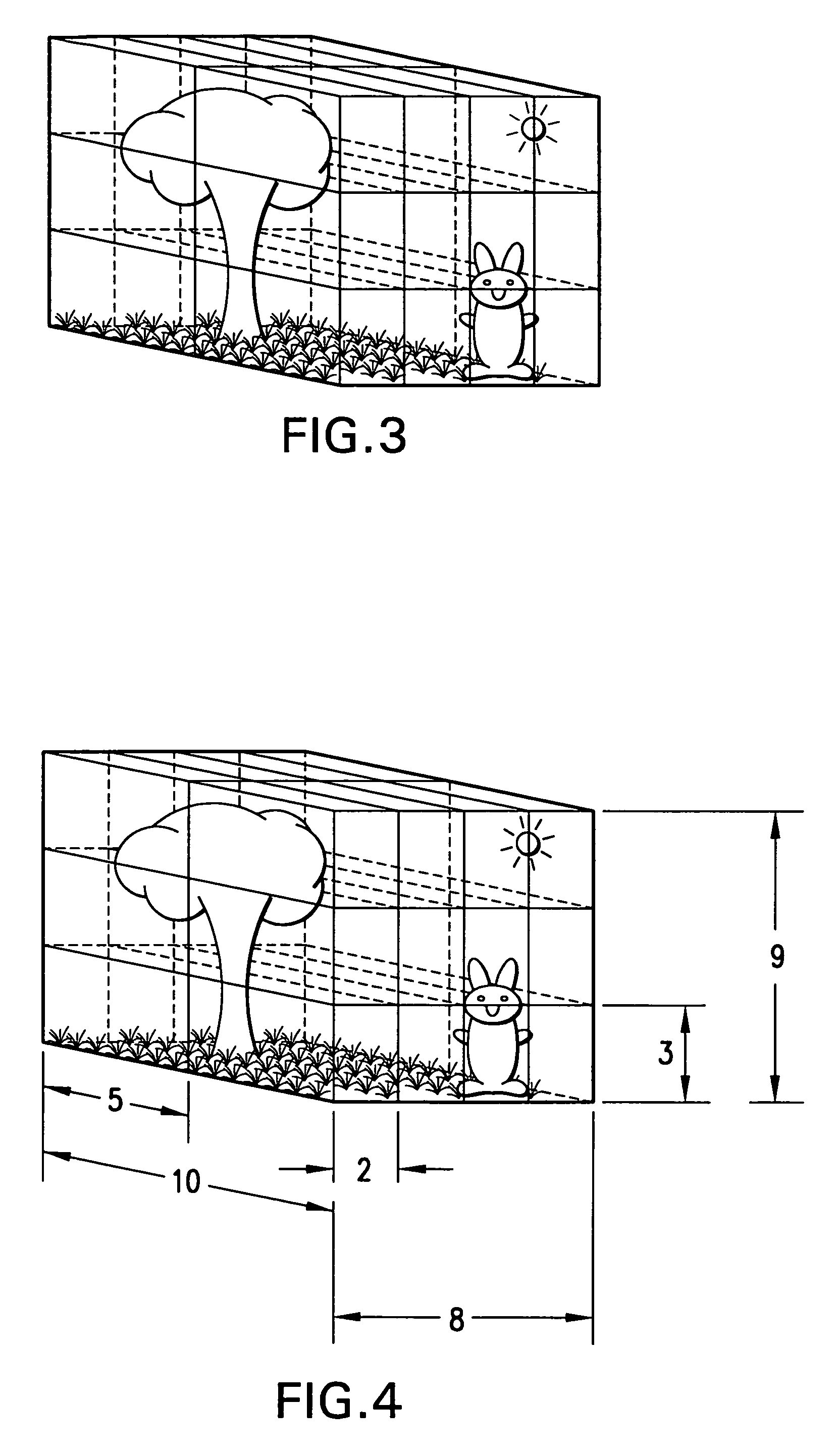Method and system for presenting three-dimensional computer graphics images using multiple graphics processing units
a computer graphics and processing unit technology, applied in the field of computer graphics technology, can solve the problems of affecting the response time of the system to a user's input, the speed at which each frame is rendered is limited to the rendering rate, and the system can be delayed, so as to achieve scalable geometrically specific textures, transparent to the application program, and the effect of scaling with resp
- Summary
- Abstract
- Description
- Claims
- Application Information
AI Technical Summary
Benefits of technology
Problems solved by technology
Method used
Image
Examples
Embodiment Construction
[0027]Nomenclature
[0028]The present invention provides a method and system for presenting three-dimensional computer graphics images using multiple graphics processing units. The following section defines several terms that occur frequently throughout the application.
[0029]Graphics Processing Unit (GPU).
[0030]This refers to a device for rendering an image on the basis of received information, such as graphics primitives and texture data. The output of a GPU is rendered three-dimensional computer graphics data.
[0031]Image Combiner.
[0032]This refers to a device which takes the output of two or more sources of rendered three-dimensional computer graphics data and combines them. The combination process can take into account colors, opacity, and the relative depth of objects in a scene. The inputs to a combiner can come from a GPU or from another combiner. The output is rendered three-dimensional computer graphics data that is dependent on (i.e., a combination of) the inputs.
[0033]Memory...
PUM
 Login to View More
Login to View More Abstract
Description
Claims
Application Information
 Login to View More
Login to View More - R&D
- Intellectual Property
- Life Sciences
- Materials
- Tech Scout
- Unparalleled Data Quality
- Higher Quality Content
- 60% Fewer Hallucinations
Browse by: Latest US Patents, China's latest patents, Technical Efficacy Thesaurus, Application Domain, Technology Topic, Popular Technical Reports.
© 2025 PatSnap. All rights reserved.Legal|Privacy policy|Modern Slavery Act Transparency Statement|Sitemap|About US| Contact US: help@patsnap.com



